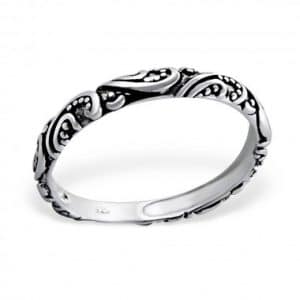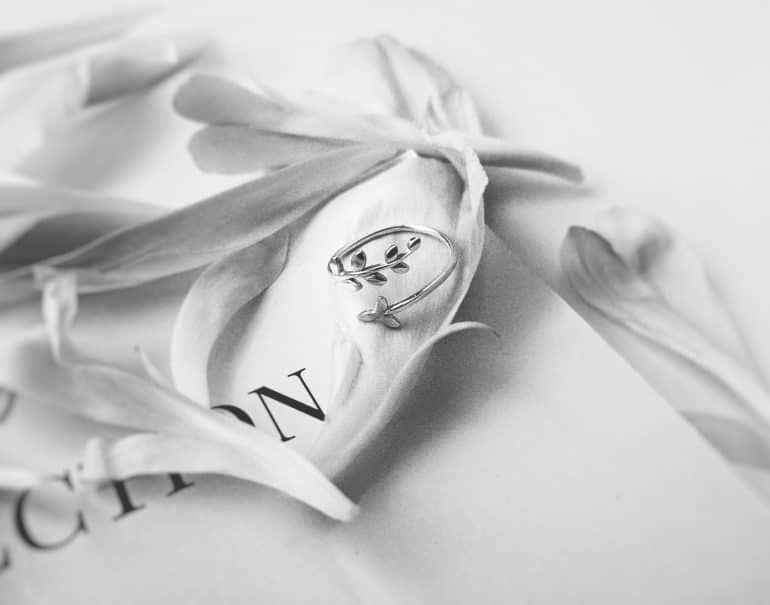There’s a sea of silver jewelry options on the market – silver bracelets, silver rings, silver necklaces – just name it and you can find it. Consumers get plenty of choices; retailers find a world of options among wholesale silver jewelry pieces.
Then again, not all silver jewelry pieces are the same. And while the differences lie in many factors, like the item’s size, design, style, et cetera, what’s most important is the type of silver used for the manufacturing of the jewelry. Consequently, what is correct to say is that the silver is different.
Why is this so important when you buy silver jewelry? If you are a retailer shopping silver jewelry wholesale, you need to know what you buy in order to know what quality you sell and how much you buy-how much you sell. If you are a consumer, you need to know a few things about silver and which type is used for the jewelry you buy to be sure of where you spend your money on, what to expect, and whether or not you may have some allergies.
Let’s talk about silver and silver jewelry
Silver is a white lustrous metal, which is found in its pure form in the crust of earth but also in small quantities in minerals and alloys. Pure silver is particularly soft. No wonder it is alloyed to be formed into pieces of jewelry. Fine silver is seldom used for making jewelry since it will be easily scratched and distorted. And most jewelry made of pure silver is earrings and studs, which are not touched often.
The most common silver type used for making jewelry is sterling silver.
What is sterling silver?
Sterling silver is a mixture of 92.5% pure silver and the rest some alloy – often copper or zinc. The alloy added is what makes sterling silver both malleable and durable. Consequently, sterling silver can be molded to form various jewelry designs and shapes. At the same time, it’s very hard and so, difficult to become damaged.
Plated silver and silver plated
What you may also find on the market is plated silver and silver plated. Although these terms seem to be each other’s mirror, they have nothing in common – apart from silver.
- Silver plated jewelry pieces are only covered by sterling silver. The actual piece of jewelry is made of another much cheaper metal – often copper. And so, the cost is reduced while the item looks lustrous due to the sterling silver plate. But this is also a thin layer and easily wears. Silver-plated jewelry costs less but also lasts less.
- Sterling silver jewelry may be gold or rhodium plated too. This means that the heart of the item is made of sterling silver. What you see is a thin layer of another precious metal, which once again will eventually fade and wear but underneath it will be sterling silver.
There’s a variety of silver types found on the market – Britannia silver, coin silver, German silver, et cetera but they are used for other applications. Not for jewelry. For jewelry making sterling silver is broadly used. And you can identify the authenticity of the sterling silver jewelry by the hallmark on each piece.
Oxidized sterling silver jewelry
 One small problem with sterling silver is that it tarnishes over time, especially when it is exposed to salty air, humidity, sulfur, cosmetics, chlorine, and other household products. And we say that this is a rather small problem because you can avoid wearing jewelry while doing house chores. And you can also polish all items to keep them shining.
One small problem with sterling silver is that it tarnishes over time, especially when it is exposed to salty air, humidity, sulfur, cosmetics, chlorine, and other household products. And we say that this is a rather small problem because you can avoid wearing jewelry while doing house chores. And you can also polish all items to keep them shining.
What you can also find on the market – or wholesale jewelry market, is oxidized silver jewelry. Actually, these are blackened sterling silver jewelry items since the process used to give the patina look doesn’t involve oxygen. Oxidized silver jewelry has a blackened appearance as if the tarnishing process has been sped up. As with the case of plated pieces, the patina look eventually goes away and the lustrous finishing of sterling silver prevails.
Sterling silver hallmark
 Authentic sterling silver jewelry bears a stamp on the jewelry item. What’s usually engraved is .925, 925, 92.5, ster, sterling. If you don’t see something like that engraved on some part of the jewelry piece, the item is not made of sterling silver.
Authentic sterling silver jewelry bears a stamp on the jewelry item. What’s usually engraved is .925, 925, 92.5, ster, sterling. If you don’t see something like that engraved on some part of the jewelry piece, the item is not made of sterling silver.
Silver and safety
One major benefit of sterling silver is that it is hypoallergenic. This simply means that you can wear sterling silver jewelry without worrying about allergic reactions. And so, it’s a good choice especially if you have a metal hypersensitivity disorder – getting skin rashes and irritations when the skin comes in contact with metal, usually nickel. Since you may not know if you are sensitive to nickel, make sure the silver jewelry you buy is free of nickel and lead.

